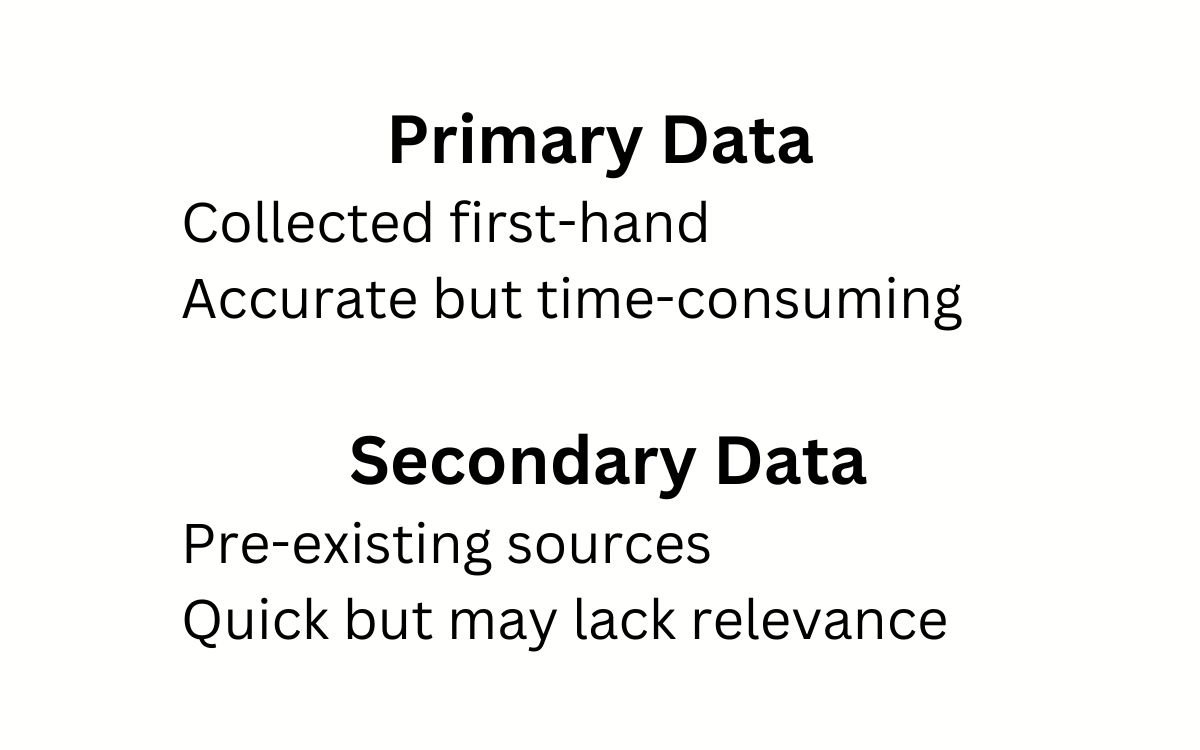Data plays a crucial role in research, serving as the foundation for analysis, conclusions, and decision-making. Researchers rely on two main types of data: primary data and secondary data. Understanding the differences between these two types, along with their advantages and limitations, is essential for selecting the appropriate data collection method for any study.
What is Primary Data?
Primary data is original and firsthand information collected directly from sources by the researcher for a specific purpose. It is obtained through various methods such as surveys, interviews, experiments, observations, and case studies. Since primary data is collected specifically for a given research objective, it is highly relevant and tailored to the study’s needs.
Advantages of Primary Data
- Accuracy and Reliability: Since the researcher collects the data, it is more accurate and specific to the study’s objectives.
- Up-to-date Information: The data is collected in real-time, ensuring that it is current and relevant.
- Customization: Researchers can design data collection methods that align with their research questions.
- Confidentiality: Primary data can be kept private, reducing the risk of biased or manipulated information.
Limitations of Primary Data
- Time-Consuming: Collecting primary data requires significant time and effort.
- Costly: Conducting surveys, interviews, or experiments may involve high expenses.
- Limited Scope: The data is specific to the research study and may not be applicable to broader analyses.
What is Secondary Data?
Secondary data is information that has already been collected, processed, and published by others. It is obtained from existing sources such as research papers, government reports, statistical databases, books, and online repositories. Researchers use secondary data to build on existing knowledge and support their studies.
Advantages of Secondary Data
- Time-Saving: Since the data is already available, researchers can focus on analysis rather than collection.
- Cost-Effective: No additional expenses are required to collect the data.
- Broad Scope: Secondary data often covers large populations and long periods, making it useful for comparative and historical studies.
- Easily Accessible: Many sources, such as government databases and academic publications, provide free or affordable access to secondary data.
Limitations of Secondary Data
- Potential Bias: The data may have been collected with different objectives, leading to possible biases.
- Outdated Information: Secondary data may not reflect current trends or conditions.
- Lack of Specificity: The available data might not align perfectly with the research objectives.
- Reliability Issues: The accuracy and credibility of secondary data depend on the source, making verification essential.
Choosing Between Primary and Secondary Data
The choice between primary and secondary data depends on various factors, including research goals, time constraints, budget, and data availability. Researchers often use a combination of both types to enhance the validity and comprehensiveness of their studies.
When to Use Primary Data:
- When specific, firsthand information is required.
- When conducting experimental research or surveys.
- When recent and accurate data is necessary.
When to Use Secondary Data:
- When conducting literature reviews or background research.
- When historical or large-scale data is needed.
- When budget and time constraints exist.
Conclusion
Both primary and secondary data play an integral role in research. While primary data provides precise and firsthand insights, secondary data offers a broader perspective and cost-effective solutions. By understanding their differences, researchers can make informed decisions about which data type best suits their study, ensuring credibility and relevance in their findings.

Leave a Reply